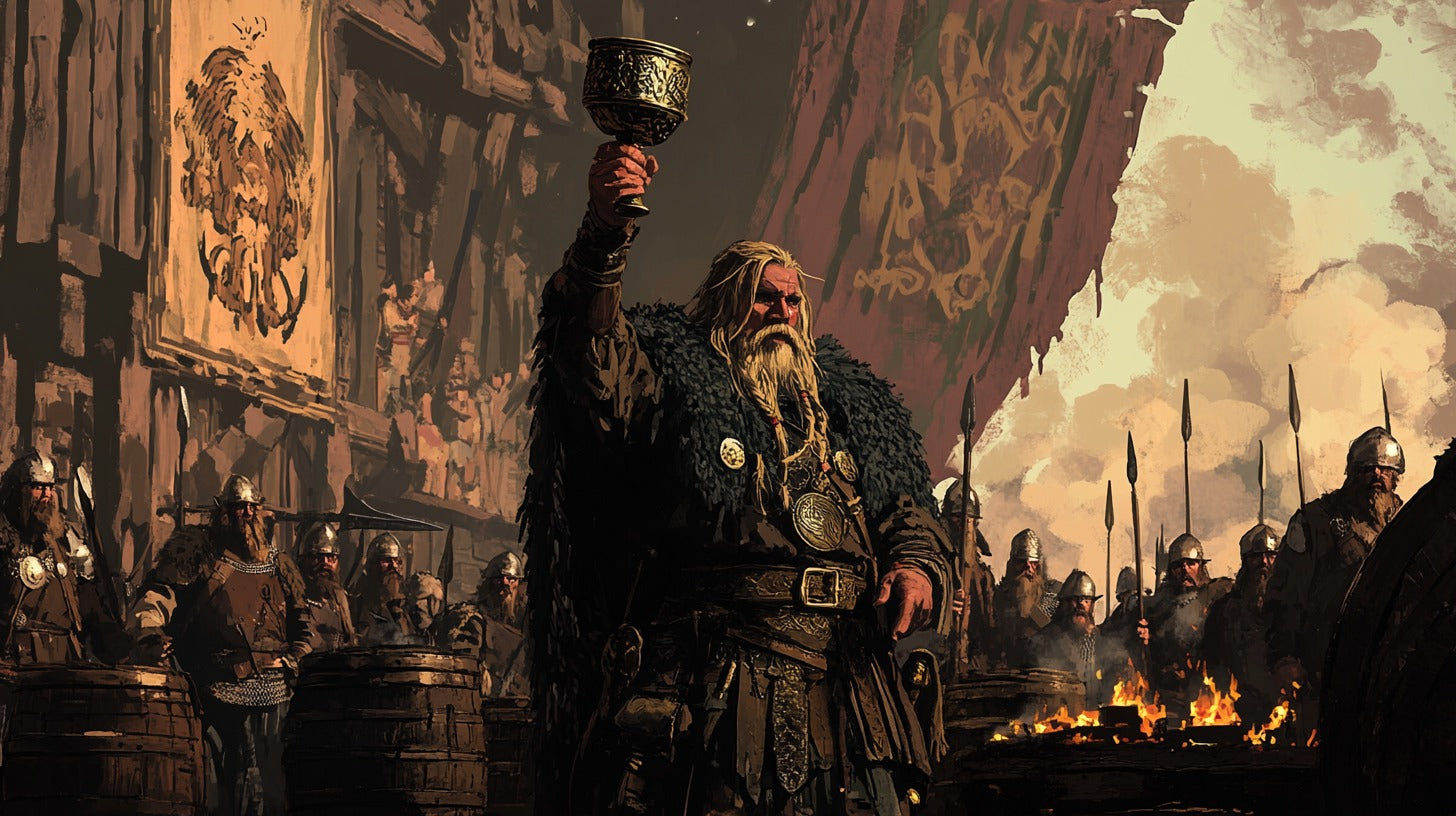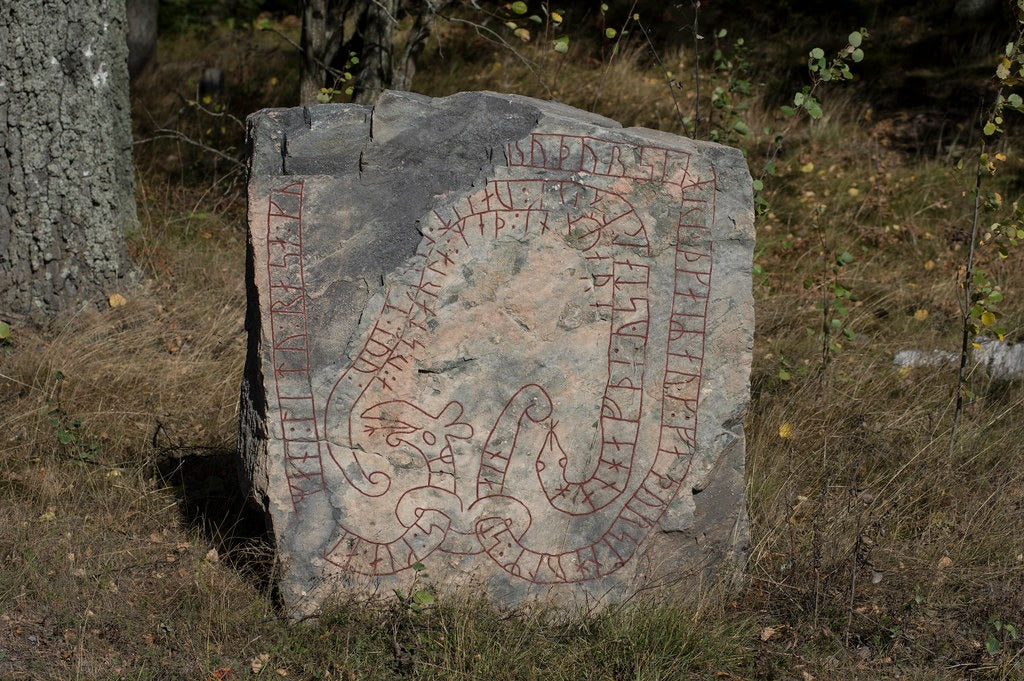
Viking Drinking Culture: Sacred Traditions, Social Bonds, and Ancient Wisdom
Popular culture has long painted Vikings as mere rowdy warriors, drinking and brawling their way through history. However, recent scholarly work, particularly the comprehensive research by Jesús Rodriguez at the University of York, reveals a far more nuanced and sophisticated drinking culture that played a crucial role in Norse society.
The Social Architecture of Viking Drinking
The Viking drinking hall was far more than a simple tavern—it was the beating heart of Norse social, political, and spiritual life. Archaeological evidence, combined with Rodriguez's analysis of historical texts, demonstrates how drinking vessels themselves created an intricate social hierarchy. When the god Heimdal visited different social classes, as recorded in the Eddic poem "Rígsþula," the quality of drinking vessels marked clear social boundaries. The lowest class, the thralls, served their drinks in rustic bowls, while the aristocratic jarls offered wine in gold-plated vessels, their cups gleaming as they engaged in sophisticated discourse late into the night.

Viking Age drinking horn (Photo: CC BY-SA 2.0)
Sacred Ceremonies in the Mead Hall
The Vikings' relationship with alcohol transcended mere consumption, weaving into the very fabric of their spiritual practices. According to the Heimskringla, three annual celebrations—Vetrnætr, Yule, and Sigrblót—marked the most important drinking ceremonies of the year. During these gatherings, particularly at Yule, the ritual of toasting followed a strict hierarchy that honored both gods and ancestors.
The Saga of Hákon the Good provides a vivid description of these ceremonies. The sacrificial beaker would be carried around the fire, with the chieftain blessing both the drink and the ceremonial meat. The first toast always went to Óðinn, seeking victory and power for the king. This was followed by toasts to Njorth and Frey for bountiful harvests and peace. Finally, participants would raise their cups in memory of departed kin through the practice of minni, or memorial toasts.
The Power of Oaths and Consequences
Perhaps the most fascinating aspect of Viking drinking culture was how it intertwined with oath-making and boasting. The Saga of the Jómsvikings recounts a particularly dramatic example of how alcohol-fueled boasts could seal one's fate. King Sveinn, recognizing the Jómsvikings' inebriated state, cleverly manipulated them into a beotword game—a practice of making sacred vows while drinking. His strategy proved fatal for the warriors, demonstrating the serious consequences of oaths made in the mead hall.
Divine Inspiration and Magical Properties
The Vikings believed certain alcoholic beverages possessed supernatural properties. The tale of Óðinn's theft of the Mead of Poetry exemplifies this belief. According to the Skáldskaparmál, this divine drink began as a peace treaty between the Æsir and Vanir gods, eventually transforming into a source of poetic inspiration. The research shows that Vikings attributed various magical properties to their drinks, from memory enhancement to increased physical strength, as evidenced in multiple saga accounts.

Bronze fitted grass drinking horns dating back to the 3rd Century during the Vendel Period on display at the Swedish Museum of National Antiquities (CC BY-SA 3.0)
Wisdom in Moderation
The Hávamál, containing Óðinn's wisdom, offers surprisingly practical advice about drinking that resonates even today. These verses emphasize the importance of maintaining one's wits while participating in social drinking customs. As Rodriguez's research highlights, this wisdom wasn't merely about avoiding drunkenness—it was about maintaining the delicate social bonds that drinking ceremonies helped forge.
Building Community Through Shared Customs
Archaeological evidence, including the famous Gotland image stones and the Golden Horns of Gallehus, supports the historical accounts of how drinking ceremonies fostered community cohesion. The practice of reciprocal hosting created intricate networks of obligation and friendship, with the quality and quantity of drink offered serving as a measure of one's honor and wealth.

The Golden Horns of Gallehus (Photo: Nationalmuseet CC BY-SA 4.0)
Modern Implications
Through careful analysis of historical sources and archaeological evidence, we can see how Viking drinking culture created a sophisticated system of social bonds and spiritual practices. Their emphasis on ceremony, moderation, and community-building through shared drinking customs offers insights into how societies can foster meaningful connections while maintaining cultural traditions.
These findings challenge our modern preconceptions about Viking society, revealing a culture that understood the delicate balance between celebration and responsibility. The Vikings' approach to communal drinking, with its emphasis on ritual and meaning, continues to fascinate scholars and enthusiasts alike.
[Editor's Note: This article draws extensively from the academic work of Jesús Rodriguez's 2007 doctoral thesis "Old Norse Drinking Culture" at the University of York. Additional sources include Olive Bray's translation of the Hávamál and various saga translations, including The Saga of the Jómsvikings by Alison Finlay.]
References
"Viking drinking horn" by arnybo is licensed under CC BY-SA 2.0.
"Guldhornene DO-10765 original cropped" by Nationalmuseet is licensed under CC BY-SA 4.0.








